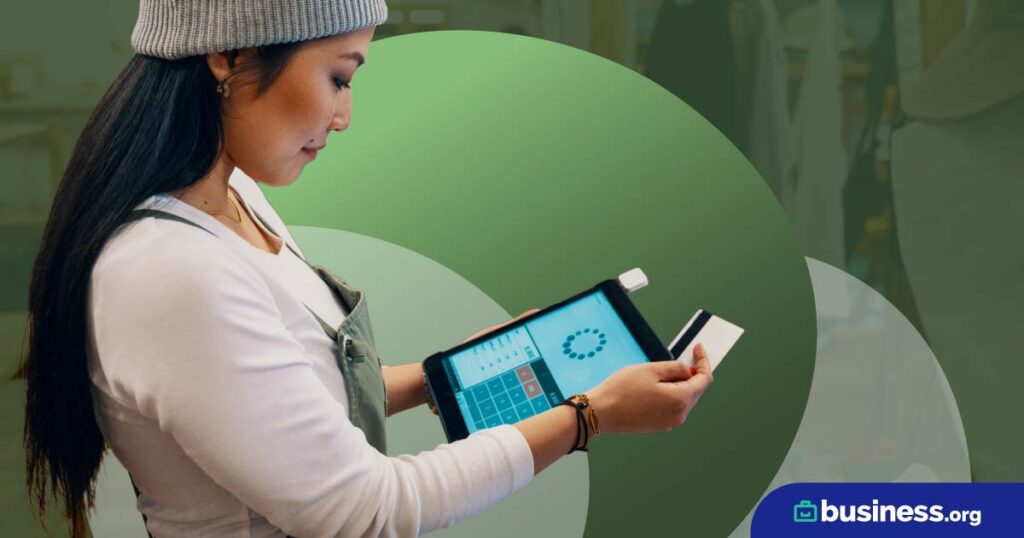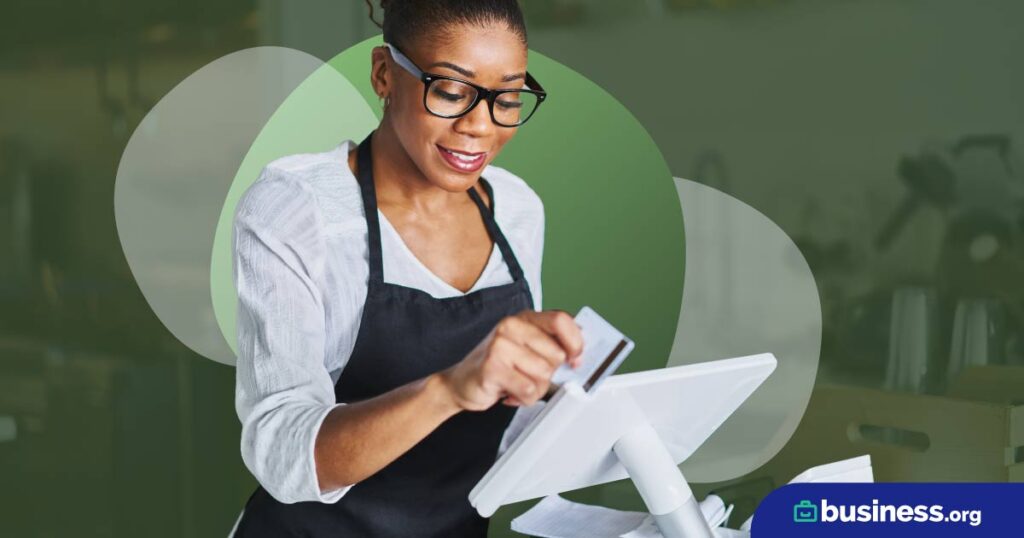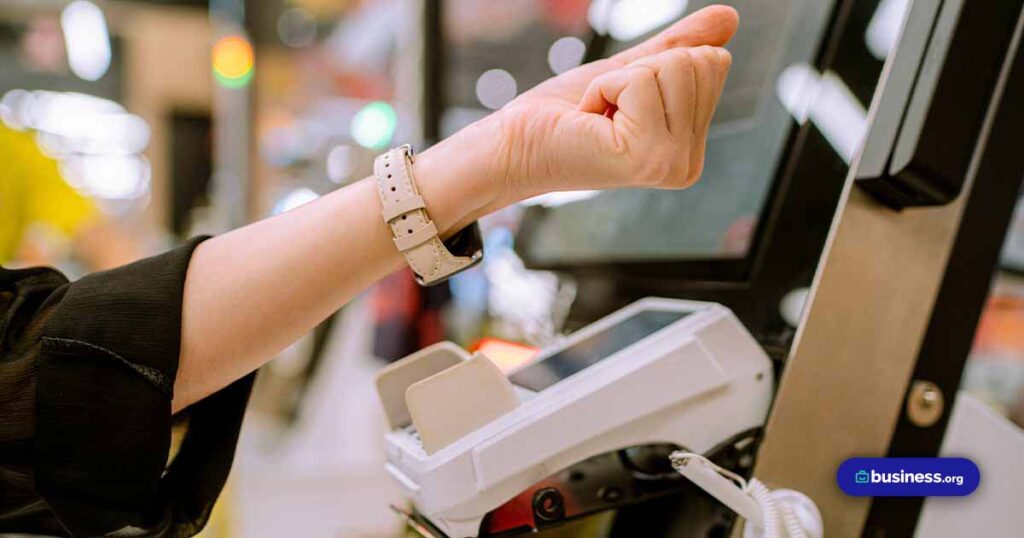We are committed to sharing unbiased reviews. Some of the links on our site are from our partners who compensate us. Read our editorial guidelines and advertising disclosure.
How Does a POS System Work?
POS or point-of-sale systems are a combination of hardware and software components that bring function and value to the sale process. A few quick examples of this function and value include the ability to scan barcodes, swipe credit cards, and track sales.
Older POS systems were mechanical cash registers that aided in sales tallying and money changing. Nowadays, POS systems have become so complex and multifaceted that it's possible to run many technical aspects of your business from the point of purchase.
In this article, we’ll examine the modern point-of-sale landscape to understand not only how POS systems work, but also how they can work for you.
POS basics
What is the basic function of a POS system? It’s meant to facilitate the sale of goods. For some businesses, all they need to make a sale happen is the ability to take payment for their products. In that case, the business should be looking for a POS system with credit card processing capabilities.
Other businesses may need more features to successfully complete a sale. For example, if they are selling products based on weight, they may need a scale at the point of sale. Or, if they’ve logged all their inventory using barcodes, they’ll need a barcode scanner.
This all amounts to the point of sale being a pretty flexible concept. It can bring different kinds of value to diverse businesses. But, the basic function will always remain the same. The point of sale will always help sales get across the finish line.
The next most important thing to know is that the point of sale can be divided into two meaningful halves: hardware and software. A strong marriage between these halves is what makes modern POS systems work. For example, a barcode scanner is only useful if it’s connected to a software database of all your products. We’ll now examine each half in greater detail.
POS software
Point-of-sale software can do a lot for your business. So much, in fact, that you can accomplish business tasks managed by entire departments of large businesses. And, you can do it all from one place:
- Build a product catalog
- Process credit cards, debit cards, and digital wallet payments
- Track and manage inventory
- Automatically update your accounting books
- Manage employees and analyze their performance
- Build a website
- Create shipping labels
- Manage your front and back of house in a restaurant
- Synchronize inventory from multiple locations
- Create a customer loyalty program
- Design and sell gift cards
- Generate financial reports for daily sales
- Capture and organize customer data
- And much more
Each of the tasks mentioned above can be done using point-of-sale software. That said, most point-of-sale systems on the market are not going to be able to do every possible POS task. But it’s good to know the possibilities before you decide on a system to adopt for your business.
Once you have a good idea of the kind of software features you may want, the next step is understanding the hardware options available to you.
By signing up I agree to the Terms of Use and Privacy Policy.
POS hardware
Your main piece of POS hardware is the computer. This computer doesn’t have to be a desktop, however, as most POS systems today allow you to access proprietary features on your laptop, tablet, or mobile device. You can also use a smart device as a consumer-facing checkout station.
Additionally, some POS providers offer their own smart hardware. Clover, for example, offers a range of smart terminals designed to run POS software programs. Some of the software comes bundled in the Clover operating system, but you can also download apps to increase functionality.
The POS provider you choose will determine the main hardware rig you will use. Some POS providers have a lot of options, and others have only a few dedicated hardware options. After you’ve settled on a main computing rig, you’ll want to look into hardware add-ons.
Additional hardware
There are a few common types of POS hardware that you’ll often see added to the base computing rig:
- Barcode scanner
- Product scale
- Cash drawer
- Self-checkout station
- Credit card terminal
- Receipt printer
- Smart device stand or case
- Shipping label printer
These additional types of hardware can be added to your POS system as needed. Restaurants, for example, probably only need a credit card reader and a receipt printer. In fact, some portable smart terminals come with a built-in credit card reader and receipt printer, so you may not even need to buy more than one piece of hardware.
Your industry and specific business needs will determine the kind of hardware that works best. In fact, certain POS companies specialize in specific industries.
Restaurant POS
Certain point-of-sale providers have designed hardware and software bundles around servicing the needs of restaurants. Restaurants are a particular challenge for POS because they usually have to manage open orders, tables, and their kitchens.
Upserve and Revel Systems are two of our favorites. Restaurant POS systems always have unique features to help streamline restaurant operations:
- Ingredient-level inventory tracking
- Itemized menu sales tracking and reporting
- Tableside ordering hardware
- Kitchen display system
- Ingredient editing for special orders
These features are not present in all POS systems, so If you want them, you’ll have to look into a POS system built for restaurants.
Seeing how items on your menu are performing, sending orders directly from a mobile POS at the table to the kitchen display system, and automatically ordering ingredients when they are running low are all POS features that can streamline your restaurant.
So, if you own a restaurant, you may want to look into getting a POS system with a more dedicated feature set.
Other industry-specific POS systems
POS systems can be tailored to any industry, but there are a few that show up most often:
- Food truck POS
- Bar POS
- Venue POS
- Retail POS
- Quick-service POS
Many POS providers cater to a multitude of industries, suggesting certain hardware and software packages based on what other businesses in the same industry typically use. But you don’t necessarily have to take your POS provider’s word for it.
If you know the kind of software and hardware that you want for your business, you can put together the perfect POS package. This is one of the reasons we like Square. It’s a great base POS system that has a lot of ways to expand so you can build out your POS system as your business grows.
Mobile POS
Nowadays, there are a growing number of businesses working remotely or selling on the go. Because of this, POS providers have been hard at work to create mobile POS systems.
With Square, for example, you can run your point-of-sale from your phone. Plug a mobile reader into your headphone jack and get to swiping. Some mobile options are simple while others are more complicated. Clover Go , for example, has all the trappings of a smart POS system in the palm of your hand.
For people selling at trade shows or farmers markets, a reliable mobile POS solution is a must. Or, if you just want your employees to be able to take transactions with your customers on the sales floor, mobile POS solutions may be an important consideration.
What should you do now?
There are a few steps to follow if you’re ready to start looking for a POS solution.
- Analyze your needs. What software and hardware features will streamline your business and add the most value to your point of sale?
- Browse providers. Some providers will have the features you want but also charge you for features you don’t use. The trick here is to find a provider that can give you everything you need at a price that fits your budget.
- Integrate your POS system. Some POS systems are built to work out of the box. Others require setup, like adding your product catalog, setting up hardware, and creating an online account.
- Use your POS system. Once you’re all set up, it’s time to start using your POS system. Take advantage of the available features, make sales, and manage your business.
- Expand your POS system. Once your business has had time to get used to the new system, you may find that you want a few features you didn’t have before. If you picked a provider like Square, it’s easy to expand and contract your POS system as needed.
If you follow these steps, you should be able to settle into a snug POS situation where you’re not paying for services you don’t need and are making the most from the services you are paying for.
The takeaway
There’s a lot to consider when putting together a POS system. You have to consider both software and hardware features and the industry-specific needs of your business. Once you understand what your business needs from the POS to run more efficiently, you’ll be able to find a POS system that works for you.
If you’re ready to start looking at POS providers, check out our picks for the top POS systems currently on the market.
Related content
Disclaimer
At Business.org, our research is meant to offer general product and service recommendations. We don't guarantee that our suggestions will work best for each individual or business, so consider your unique needs when choosing products and services.



